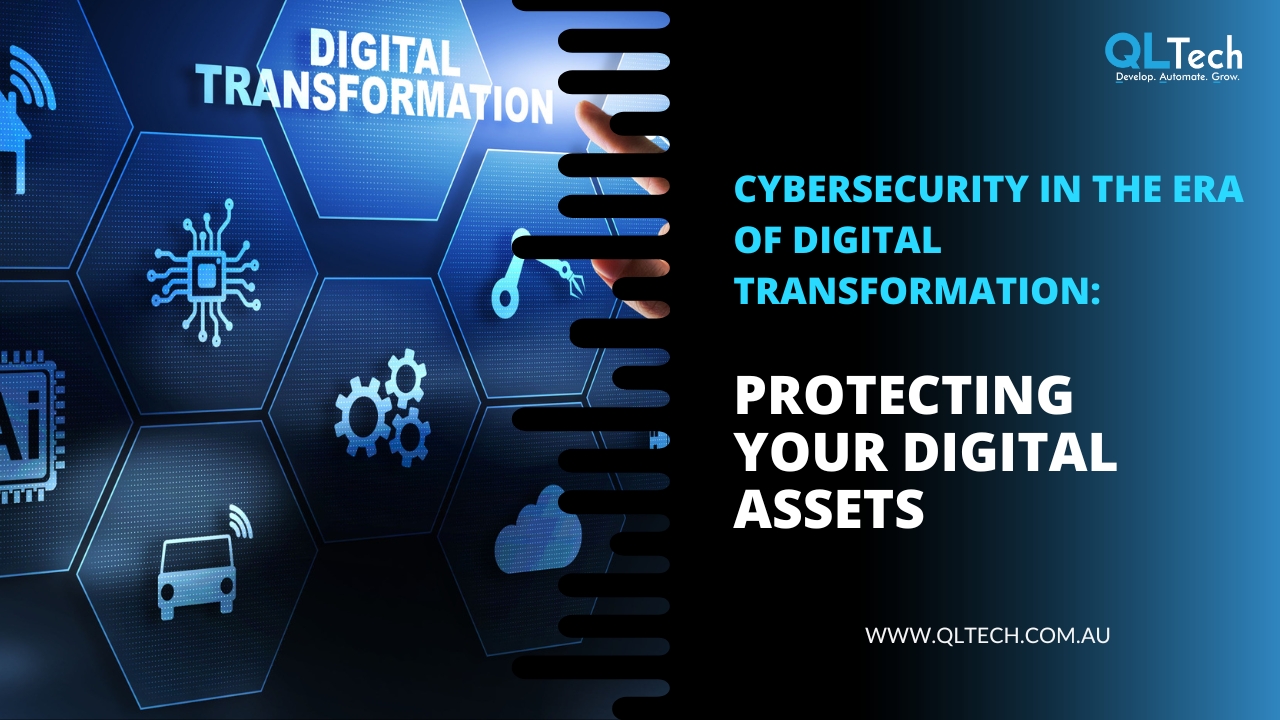In today’s rapidly evolving digital landscape, organizations are undergoing significant digital transformation to stay competitive and meet the demands of a connected world. However, with increased reliance on digital technologies comes the pressing need for robust cybersecurity measures. Protecting digital assets from cyber threats has become a paramount concern for businesses across industries. In this blog, we will explore the importance of cybersecurity in the era of digital transformation and provide essential tips for safeguarding your valuable digital assets.

- Understanding the Changing Threat Landscape: The digital era has brought about a complex and ever-evolving threat landscape. Cybercriminals are continually developing sophisticated techniques to exploit vulnerabilities in networks, systems, and applications. Understanding the types of threats, such as malware, ransomware, phishing, and social engineering, is crucial for organizations to implement effective cybersecurity measures. Regular threat intelligence gathering and staying updated on the latest security trends are essential to stay one step ahead of cyber attackers.
- Implementing Multi-Layered Defense Strategies: A robust cybersecurity strategy relies on multiple layers of defense to protect digital assets. This approach involves implementing a combination of preventive, detective, and responsive measures. It includes deploying firewalls, intrusion detection systems, and antivirus software to prevent unauthorized access. Regular vulnerability assessments and penetration testing help identify weaknesses in systems and applications. Data encryption, strong access controls, and authentication mechanisms add an extra layer of protection. Additionally, having an incident response plan in place ensures a swift and coordinated response to security incidents.
- Educating and Training Employees: Human error remains one of the leading causes of security breaches. Employees can unknowingly fall victim to phishing emails, download malicious attachments, or use weak passwords. Educating and training employees on cybersecurity best practices is critical. Regular security awareness programs can help employees recognize and report suspicious activities, use secure password practices, and understand the importance of data privacy. Simulated phishing exercises can also be conducted to assess employees’ readiness and provide targeted training.
- Embracing Cloud Security: Cloud computing has become an integral part of digital transformation initiatives. However, it introduces new security challenges. Organizations must ensure that their cloud service providers offer robust security measures, such as data encryption, access controls, and regular audits. Additionally, implementing strong identity and access management protocols for cloud services is essential. Regularly monitoring and auditing cloud environments can help detect and mitigate potential vulnerabilities and unauthorized access attempts.
- Regular Updates and Patch Management: Software vulnerabilities are frequently discovered, making regular updates and patch management crucial for maintaining a secure digital infrastructure. Organizations should establish a comprehensive patch management process to promptly apply security patches and updates to operating systems, applications, and firmware. Automated patch management tools can streamline this process and ensure timely implementation.
Conclusion: As organizations embrace digital transformation, cybersecurity must be a top priority to protect valuable digital assets from the growing threatscape. Implementing multi-layered defense strategies, educating employees, embracing cloud security, and maintaining a proactive approach to updates and patch management are key steps to safeguarding your digital infrastructure. By staying informed about emerging threats and adopting a proactive and holistic cybersecurity approach, businesses can effectively navigate the era of digital transformation while mitigating risks and maintaining the trust of their customers and stakeholders.